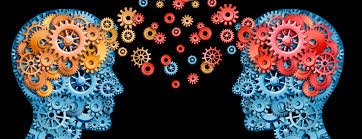Image courtesy of Oxford University Press Blog.
A team of Yale researchers led by Joy Hirsch has utilized a revolutionary technology known as functional near-infrared spectroscopy (fNIRS) to illuminate differences in brain activation patterns between pairs of people discussing a topic on which they agree and pairs of people discussing a topic on which they differ.
fNIRS is a portable method by which neuroscientists can noninvasively monitor changing hemoglobin levels—and thus activation—across the brains of multiple participants while they engage in a wide array of activities. This is an important development in the field of social neuroscience because it allows researchers to directly study what they have thus far only been able to simulatez: social interaction.
Hirsch and her team found major brain activation differences between disagreeing and agreeing partners. Firstly, the location of the activity differed. When partners were in agreement, activity occurred in regions involved primarily in social perception, while when they were in disagreement, activity occurred in regions responsible for higher order executive functions. Recruitment of such distinct structures suggests that agreeing and disagreeing are not merely opposites of one another, but are in fact entirely separate processes. Secondly, when the team looked at the relationship between activation patterns within pairs, they found that agreeing partners’ brains exhibited synchronous activation while disagreeing partner’s brains did not. Hirsch and colleagues are now setting out to explore the meaning of this synchrony—where it comes from, how it can be modified, and what it means about social connectedness.
“Social interactions are the most important functions that we as humans have,” Hirsch said. “Because of the lack of technology to investigate those functions in dyadic, real-life modes, we know very little about them.” Through her lab’s revolutionary work with fNIRS, Hirsch is on her way towards filling that knowledge gap in the field of social neuroscience.

